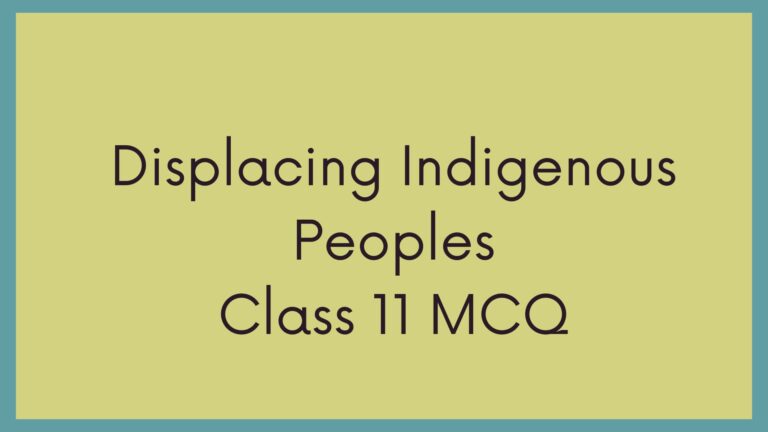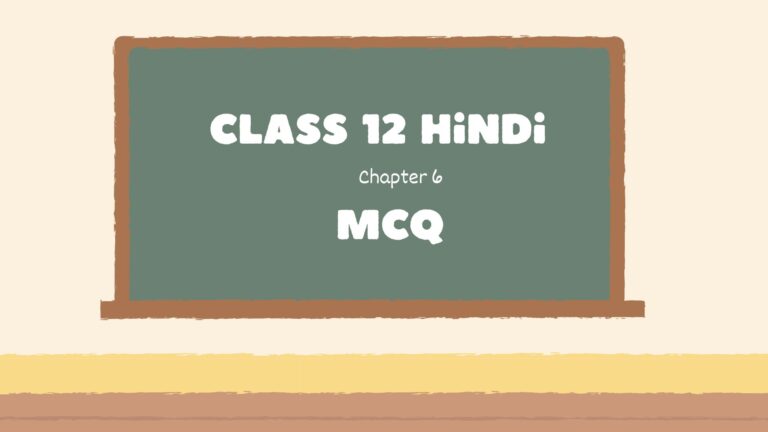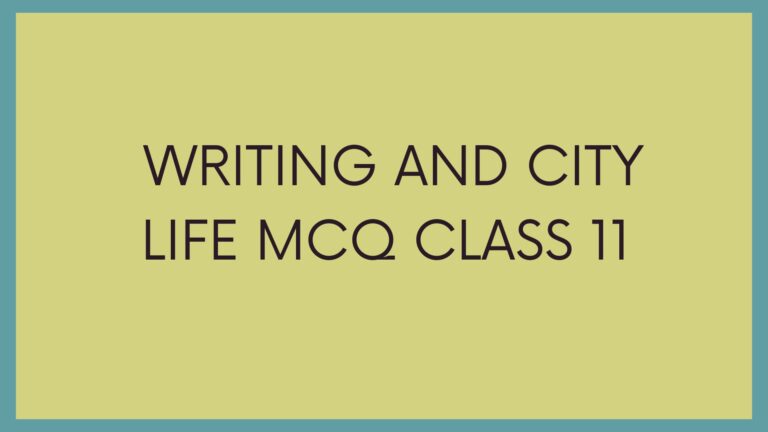Class 12 Political Chapter 1 Question Answer | The End of Bipolarity Important Questions
This article is designed to provide you with the Class 12 Political Chapter 1 Question Answer. The End of Bipolarity: Important Questions are very helpful from the point of view of exams. Use these personalized questions from me to excel in exams.

Political Science – Chapter 1: The End of Bipolarity
Class 12 Political Chapter 1 Question Answer – Short Answer type
Q1. What were the main causes of the disintegration of the Soviet Union?
- The Soviet economy was stagnant and could not match the technological progress of the West.
- Military spending in the arms race drained resources.
- Nationalist movements in republics like Lithuania, Estonia, and Ukraine weakened unity.
- Bureaucracy and corruption reduced efficiency.
- Gorbachev’s reforms created more problems instead of solving them.
Q2. Explain the role of Mikhail Gorbachev in the disintegration of the USSR.
- Introduced Glasnost (openness) and Perestroika (restructuring).
- Allowed greater freedom of speech and elections.
- These reforms weakened Communist Party control.
- Failed to balance democracy with stability.
- His policies accelerated disintegration rather than preventing it.
Q3. What were the features of the Soviet political system?
- One-party system under Communist Party.
- Centralized power without opposition.
- Lack of free and fair elections.
- Strict control over media and expression.
- Use of ideology (Marxism–Leninism) to justify authority.
Q4. What is meant by Shock Therapy?
- Sudden transition from communism to capitalism after USSR collapse.
- Privatisation of state industries.
- Withdrawal of state subsidies.
- Entry of foreign investment and free markets.
- Resulted in inflation, unemployment, and inequality.
Q5. How did the fall of the Berlin Wall affect world politics?
- Marked the end of Cold War divisions.
- Led to reunification of Germany.
- Collapse of Communist regimes in Eastern Europe.
- Strengthened European integration.
- Symbolized victory of liberal democracy.
Q6. What challenges did Russia face after the disintegration of the USSR?
- Political instability during Yeltsin’s rule.
- Economic depression and inflation.
- Unemployment and poverty increased.
- Separatist movements in Chechnya and other regions.
- Struggle to maintain Russia’s international status.
Q7. Describe the economic features of the Soviet system.
- State-controlled economy with no private ownership.
- Centralized planning through Five-Year Plans.
- Emphasis on heavy industry and defense.
- Guarantee of employment, health, and education.
- Neglect of consumer goods and services.
Q8. What were the consequences of Shock Therapy for ordinary people?
- Loss of jobs due to privatisation.
- Poverty increased as subsidies ended.
- Widening gap between rich and poor.
- Social services like health and education collapsed.
- Many fell below poverty line.
Q9. Explain the significance of the Commonwealth of Independent States (CIS).
- Formed after the breakup of the USSR in 1991.
- Provided a loose alliance of former Soviet republics.
- Aimed at military and economic cooperation.
- Russia became the dominant power within CIS.
- Reflected shift from unity to fragmented independence.
Q10. What was the impact of the disintegration of the USSR on international relations?
- End of bipolar world order.
- USA emerged as the sole superpower.
- Spread of democracy and free markets globally.
- Reduced ideological conflict.
- Rise of unipolarity and American dominance.
Class 12 Political Chapter 1 Question Answer – Long Answer Questions
Q1. Analyse the causes of the disintegration of the Soviet Union.
- Economic stagnation due to inefficient planning.
- Arms race with the USA drained resources.
- Costly Afghan war added pressure.
- Nationalist movements in Baltic and Central Asian republics.
- Corruption and lack of reforms.
- Gorbachev’s Glasnost and Perestroika weakened control.
- Communist Party lost legitimacy.
- Young generation demanded democracy and freedom.
- Competition from Western technology and economy.
- Ultimately, republics declared independence leading to collapse.
Q2. Describe the consequences of Shock Therapy in post-Soviet countries.
- Collapse of state-owned industries.
- Sharp inflation and unemployment.
- Emergence of oligarchs (super-rich businessmen).
- Increase in inequality between rich and poor.
- Poverty and decline in living standards.
- Healthcare and education collapsed.
- Agricultural sector suffered without subsidies.
- Social unrest and crime increased.
- Political instability followed economic failure.
- Overall, society suffered a painful transition.
Q3. How did the disintegration of the USSR mark the end of the Cold War and bipolarity?
- USSR collapsed in 1991, ending the superpower rivalry.
- USA emerged as the sole global superpower.
- NATO remained intact, Warsaw Pact dissolved.
- Germany was reunified and Europe integrated.
- Democratic governments rose in Eastern Europe.
- Communism lost influence worldwide.
- Market economies replaced central planning.
- UN gained greater role but under US influence.
- New power centres like EU and China later emerged.
- Thus, bipolarity gave way to a unipolar world.
Q4. Explain the challenges faced by Russia after 1991.
- Economic crisis: inflation, unemployment, and poverty.
- Political instability under Yeltsin’s weak leadership.
- Rise of separatist movements (Chechnya).
- Oligarchs controlled resources and politics.
- Military power declined.
- Loss of superpower status.
- Social inequality widened.
- Dependence on Western aid and investment.
- Struggle to redefine national identity.
- Transition to democracy remained incomplete.
Q5. Evaluate the role of Mikhail Gorbachev in the collapse of the USSR.
- Introduced Glasnost (openness) and Perestroika (restructuring).
- Aimed to modernize economy and democratize politics.
- Reduced censorship, allowed free debate.
- Initiated multiparty elections.
- Nationalist movements gained momentum.
- Failed to control centrifugal forces.
- Reforms exposed inefficiency instead of curing it.
- Lost support of Communist Party and conservatives.
- Could not satisfy republics demanding independence.
- His policies unintentionally accelerated disintegration.
Q6. What were the features of the Soviet model of the economy and its weaknesses?
- State-owned industries and farms.
- Centralized planning.
- Focus on heavy industry and defense.
- Guarantee of basic needs (jobs, health, education).
- Equal distribution in theory.
Weaknesses: - Shortages of consumer goods.
- Lack of innovation and technology.
- Low productivity and inefficiency.
- Corruption and bureaucracy.
- Could not compete with Western economies.
Q7. Examine the effects of the fall of the Berlin Wall on Eastern Europe.
- End of Communist rule in East Germany.
- Germany reunited in 1990.
- Communist governments collapsed in Poland, Hungary, and others.
- Spread of democracy and free elections.
- Eastern Europe integrated into the EU.
- NATO expanded eastwards.
- Symbolized end of Cold War divisions.
- National identity revived in Eastern countries.
- Economic reforms introduced.
- Entire region shifted to democracy and capitalism.
Q8. Discuss the role of Boris Yeltsin in shaping post-Soviet Russia.
- First elected President of Russia (1991).
- Led Russia during collapse of USSR.
- Promoted privatisation and free market reforms.
- Faced economic crisis and inflation.
- Handled separatist wars in Chechnya.
- Weakened by corruption and oligarch influence.
- Brought closer ties with the West.
- Ensured Russia kept nuclear arsenal and UN seat.
- Struggled with political opposition.
- Paved way for Putin’s rise in 2000.
Q9. How did the disintegration of the USSR affect global politics?
- End of bipolar Cold War rivalry.
- USA became sole superpower.
- Spread of liberal democracy.
- Expansion of NATO and EU.
- Weakening of socialism worldwide.
- Rise of new power centres (China, India, EU).
- United Nations gained importance.
- Globalisation increased.
- US dominance in military and economy.
- Shift from ideological conflict to economic competition.
Q10. Compare the Cold War era with the post-Cold War world.
- Cold War: Bipolar world (USA vs USSR).
- Post-Cold War: Unipolar world (US dominance).
- Cold War: Ideological division (capitalism vs communism).
- Post-Cold War: Spread of democracy and free markets.
- Cold War: NATO vs Warsaw Pact.
- Post-Cold War: Warsaw Pact dissolved.
- Cold War: Arms race, proxy wars.
- Post-Cold War: Arms reduction agreements.
- Cold War: Divided Germany and Europe.
- Post-Cold War: Reunified Germany, integrated Europe.
- Cold War: Global tension and fear of nuclear war.
- Post-Cold War: Globalisation and economic competition.
Class 12 Political Science Chapter 1 MCQ | The End of Bipolarity Important MCQ







2 Comments